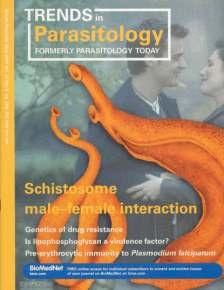
Haseeb A. Siddiqi, PhD
Associate Professor
Department of Cell Biology
 Host-parasite interactions and mechanisms of pathogenesis and immunity in schistosomiasis;
reproductive biology of schistosomes and mechanisms of chemoattraction in schistosome
males and females.
Host-parasite interactions and mechanisms of pathogenesis and immunity in schistosomiasis;
reproductive biology of schistosomes and mechanisms of chemoattraction in schistosome
males and females.
Schistosomiasis is a chronic granulomatous disease which afflicts 200 to 300 million people worldwide and causes 500,000 to 1,000,000 deaths annually. Adult schistosomes live in human blood vessels, causing little pathology themselves, and thrive well in the face of a vigorous immune response. Each female lays 300 or more eggs/day depending on the species and the worm burden. When trapped in host tissues the eggs elicit inflammation, and the resultant granulomata form the pathologic basis of schistosomiasis.
Since schistosome females do not reach sexual maturity (a requisite for egg production) without mating with males, we have been interested in understanding mate-finding mechanisms in schistosomes with the hope that interruption of mate-finding would prevent egg-induced pathology. Using an in vitro bioassay we have demonstrated that developing males elaborate a chemoattractant for females, and that females express a corresponding receptor. Our results suggest that males no longer release the chemoattractant once they are mated. It is not known whether the chemoattractant plays any role in induction of sexual maturation in developing females and whether females continue to express the chemoreceptor following mating.
Treatment of schistosome females with soybean agglutinin (SBA) effectively blocks their attraction to males or their excretory-secretory products, and chemoattraction is restored in n-acetyl-D-galactosamine (GalNAc) - treated females. We have also demonstrated competitive binding of SBA and anti-GP50 mAb to the schistosome tegument. These observations suggest that GalNAc-containing receptors, possibly GP50, the major SBA-binding schistosome glycan, mediate chemoreception in schistosome females. These findings may explain the observed differences in morbidity between individuals with different blood groups. Individuals with blood group B or O may afford protection because of their natural anti-A or by mounting a more efficient antibody response directed against GalNAc-containing structures shared by blood group A red blood cells.

Random migration of females in the absence of any stimulus (n = 60). The majority
of worms remain in the zero zone, with those drifting in either direction being equal
in number. 
Response of untreated females to ES products of males. When agar cylinders containing ES products of males were placed at one end of each linear channel, the females decidedly migrated toward the ES products. This response was significantly different from the random migration of females (p = 10-9 [or <0.05], Kruskal-Wallis ANOVA).
We have also demonstrated that elevated tumor necrosis factor α (TNFα) levels in murine schistosomiasis are associated with oviposition and circumoval granuloma formation, and that the newly-formed circumoval granulomata during the 10 week th post-infection are smaller than those formed earlier, suggesting immune modulation. In addition, TNFα suppresses amino acid uptake and egg production in schistosome females or worm-pairs maintained in vitro.
- Haseeb, M.A. & Fried, B. 1988. Chemical communication in helminths. Advances in Parasitology, 27: 169-207.
- Eveland, L.K. & Haseeb, M.A. 1989. Schistosoma mansoni: Onset of chemoattraction in developing worms. Experientia, 45: 309-310.
- Haseeb, M.A. & Eveland, L.K. 1991. Schistosoma mansoni: A chemoattractive factor released by males and its receptor in females. Experientia, 47: 970-974.
- Haseeb, M.A., Solomon, W.B. & Palma, J.F. 1996. Schistosoma mansoni: Effect of recombinant tumor necrosis factor alpha on fecundity and [14C]-tyrosine uptake in females maintained in vitro. Comparative Biochemistry & Physiology, 115C(3): 265-269.
- Haseeb, M.A. & Craig, J.P. 1997. Suppression of the immune response to diphtheria toxoid in murine schistosomiasis. Vaccine, 15: 45-50.
- Haseeb, M.A. 1998. Schistosoma mansoni: Females enhance [14C]-tyrosine incorporation in males maintained in vitro. Journal of Helminthology, 72(2): 123-126.
- Haseeb, M.A., Bergquist, N.R., Eveland, L.K. & Eppard, R.C. 1998. Vaccination against schistosomiasis: Progress, prospects and novel approaches. Proceedings of the IX International Congress of Parasitology, 365-372.
- Haseeb, M.A., Shirazian, D.J. and Preis, J. 2001. Elevated serum levels of TNFα, sTNF-RI and sTNF-RII in murine schistosomiasis correlate with schistosome oviposition and circumoval granuloma formation. Cytokine, 15: 266-269.
- Haseeb, M.A., Thors, C., Linder, E. & Eveland, L.K. 2008. Schistosoma mansoni: Chemoreception through n-acetyl-D-galactosamine-containing receptors in females offers insight into increased severity of schistosomiasis in individuals with blood group A. Experimental Parasitology, 119: 67-73.
- Haseeb, M.A., Preis, J. & Shirazian, D.J. 2009. Schistosoma mansoni : Differential inhibition of [ C]-methionine uptake and reduced fecundity in mated females 14 treated with recombinant tumor necrosis factor in vitro. - submitted.
- Block (course) director: MS2 Gastrointestinal Diseases
- Discipline director: MS2 Microbiology & Immunology
- Chairman, Institutional Biosafety Committee (IBC)
- Member, Animal Care and Use Committee (ACUC)
Director, Clinical Parasitology and Diagnostic Immunology Laboratories, Kings County Hospital Center